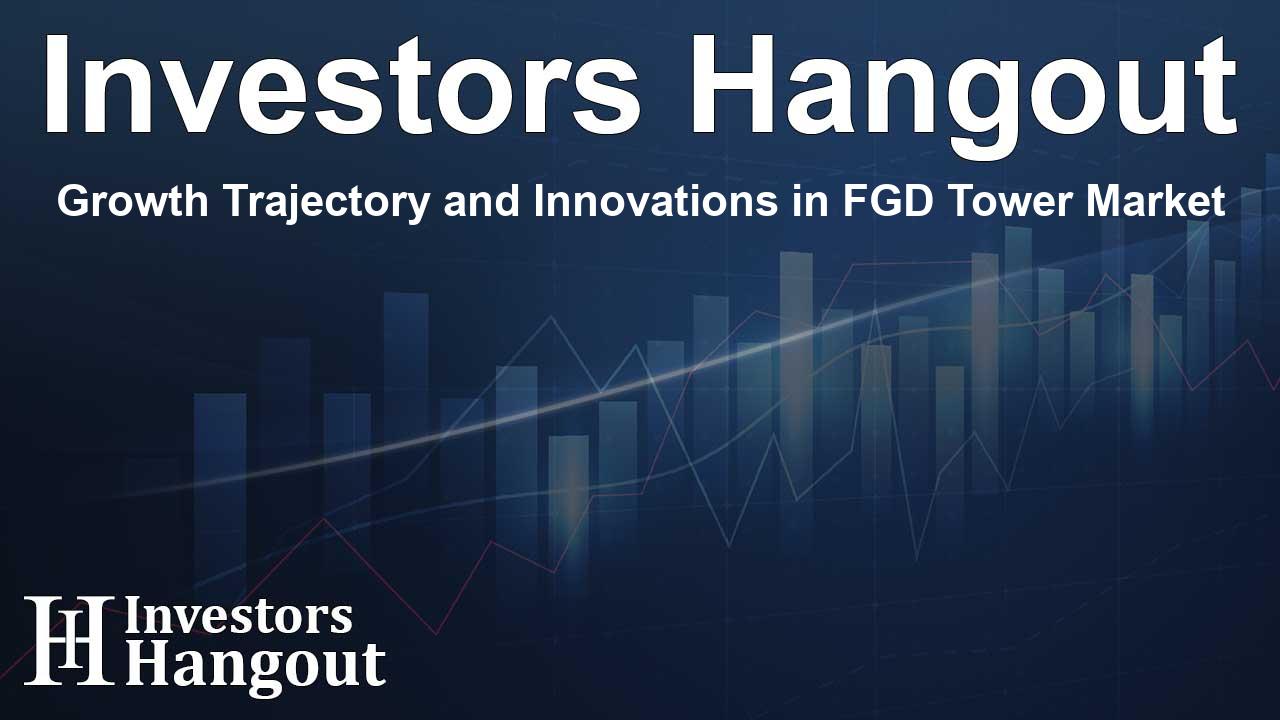Growth Trajectory and Innovations in FGD Tower Market

Growth Potential of the Flue Gas Desulfurization Tower Market
The global Flue Gas Desulfurization (FGD) tower market is on a promising growth path, projected to climb from an estimated USD 21.4 billion in 2024 to an impressive USD 48.82 billion by 2032. This substantial growth represents a compound annual growth rate (CAGR) of 7.73%. The primary factors propelling this market forward include stringent environmental regulations that aim to reduce sulfur dioxide (SO?) emissions, increasing energy demands, and a shift toward cleaner technologies in power generation and industrial applications.
Market Dynamics Influencing Growth
The growth of the FGD tower market is significantly influenced by various market drivers:
Impact of Environmental Regulations
Governments worldwide are instituting rigorous regulations targeted at limiting SO? emissions. These measures compel industries to invest in FGD systems to meet environmental compliance, helping to drive demand for these technologies.
Increase in Global Energy Demand
With the surge in energy consumption, especially in emerging markets, there is a heightened need for expanding power generation capacities. This demand necessitates the increased installation of FGD towers, particularly in thermal power plants.
Advancements in FGD Technologies
Technological progress in FGD systems has led to the development of more efficient and cost-effective solutions. This innovation encourages a broader range of industries to adopt these systems, facilitating their market growth.
Public Health and Environmental Awareness
Heightened public concern regarding air pollution's health implications drives industries to consider advanced emission control technologies, including FGD systems. This growing awareness is leading to increased investments in emission control.
Challenges Facing the Market
While the prospects appear bright, there are notable challenges that could impede market growth:
Capital and Operating Costs
The initial investments required for installing and maintaining FGD systems can be substantial, creating barriers, particularly for small and medium enterprises.
Alternative Technologies
The rise of alternative emission control technologies presents another obstacle for the growth of the FGD market. Companies may prefer these alternatives, impacting FGD adoption.
Raw Material Price Volatility
Fluctuations in raw material prices crucial for FGD system production can alter the cost structures, posing challenges to market stability.
Product Type Landscape
The FGD market can be categorized based on product types, each catering to different needs:
Wet FGD Systems
The wet FGD systems dominate the market due to their effectiveness in SO? removal. They are primarily used in coal-fired power facilities and various industrial applications.
Dry FGD Systems
Dry FGD solutions are favored in regions facing water scarcity and smaller setups due to their lower capital investment despite slightly reduced SO? removal efficiency.
Semi-Dry FGD Systems
Semi-dry FGD technologies combine elements of wet and dry systems, offering a balanced approach in efficiency and cost-effectiveness, which is attracting various industry sectors.
Applications of FGD Systems
The applications of FGD systems span across multiple industries:
Power Generation Sector
As the largest application area, the power generation sector is pushing for FGD installations to reduce emissions from coal-fired power operations.
Cement Manufacturing
Cement production processes often generate emissions that FGD systems help to control, ensuring compliance with environmental regulations.
Manufacturing Sector
Various manufacturing processes produce SO? emissions, making FGD systems essential for mitigating environmental impacts.
Chemical Manufacturing
In the chemical industry, FGD systems are utilized to manage emissions from chemical reactions and industrial processes.
Geographical Insights
The FGD tower market exhibits varying growth patterns across different regions:
Asia-Pacific Dominance
The Asia-Pacific region leads the market, propelled by rapid industrialization, urban growth, and stringent environmental regulations, especially in countries aiming for sustainable development.
North American Growth
In North America, growth is fueled by modernizing existing power plants and enforcing strict emission standards, increasing the reliance on FGD technologies.
Europe's Commitment
Europe's focus on sustainable advancements and environmental conservation increases demand for sophisticated FGD systems.
Emerging Markets
Latin America and the Middle East & Africa are witnessing growing investments in industrial infrastructure, which contributes to the rising adoption of FGD technologies.
Emerging Trends to Watch
A few key trends are shaping the future landscape of the FGD tower market:
Integration with Carbon Capture Technologies
There’s a growing trend to combine FGD systems with carbon capture technologies, advancing the overall emission control strategy.
Development of Hybrid Systems
The creation of hybrid systems that merge wet, dry, and semi-dry FGD technologies is gaining traction, showcasing innovative approaches to pollution control.
Digital Monitoring and Automation
The integration of IoT and AI technologies for real-time monitoring and optimization of FGD systems is becoming increasingly prevalent.
Eco-friendly Sorbents
Research on sustainable sorbents is taking place, focusing on enhancing cost-effectiveness while addressing environmental concerns.
Competitive Landscape Overview
The FGD tower market features several key players who are committed to innovation and efficiency:
- General Electric Company
- Mitsubishi Hitachi Power Systems Ltd.
- Babcock & Wilcox Enterprises Inc.
- FLSmidth & Co. A/S
- Doosan Lentjes GmbH
These companies are engaged in research and development aimed at providing cost-effective and efficient FGD solutions. Strategic partnerships and mergers are common tactics to enhance their market presence and technological capabilities.
Frequently Asked Questions
What is the projected growth of the FGD tower market?
The FGD tower market is expected to grow from approximately USD 21.4 billion in 2024 to around USD 48.82 billion by 2032.
What factors are driving the growth of the FGD market?
Key drivers include stringent environmental regulations, rising energy demand, and advancements in FGD technologies.
What are the primary applications of FGD systems?
FGD systems are primarily used in power generation, cement manufacturing, and various industrial applications.
Which regions are leading in FGD tower market growth?
The Asia-Pacific region currently dominates the FGD tower market, followed by North America and Europe.
What trends are emerging in the FGD industry?
Emerging trends include the integration of carbon capture technologies, development of hybrid systems, and increased usage of digital monitoring and eco-friendly sorbents.
About The Author
Contact Hannah Lewis privately here. Or send an email with ATTN: Hannah Lewis as the subject to contact@investorshangout.com.
About Investors Hangout
Investors Hangout is a leading online stock forum for financial discussion and learning, offering a wide range of free tools and resources. It draws in traders of all levels, who exchange market knowledge, investigate trading tactics, and keep an eye on industry developments in real time. Featuring financial articles, stock message boards, quotes, charts, company profiles, and live news updates. Through cooperative learning and a wealth of informational resources, it helps users from novices creating their first portfolios to experts honing their techniques. Join Investors Hangout today: https://investorshangout.com/
The content of this article is based on factual, publicly available information and does not represent legal, financial, or investment advice. Investors Hangout does not offer financial advice, and the author is not a licensed financial advisor. Consult a qualified advisor before making any financial or investment decisions based on this article. This article should not be considered advice to purchase, sell, or hold any securities or other investments. If any of the material provided here is inaccurate, please contact us for corrections.
